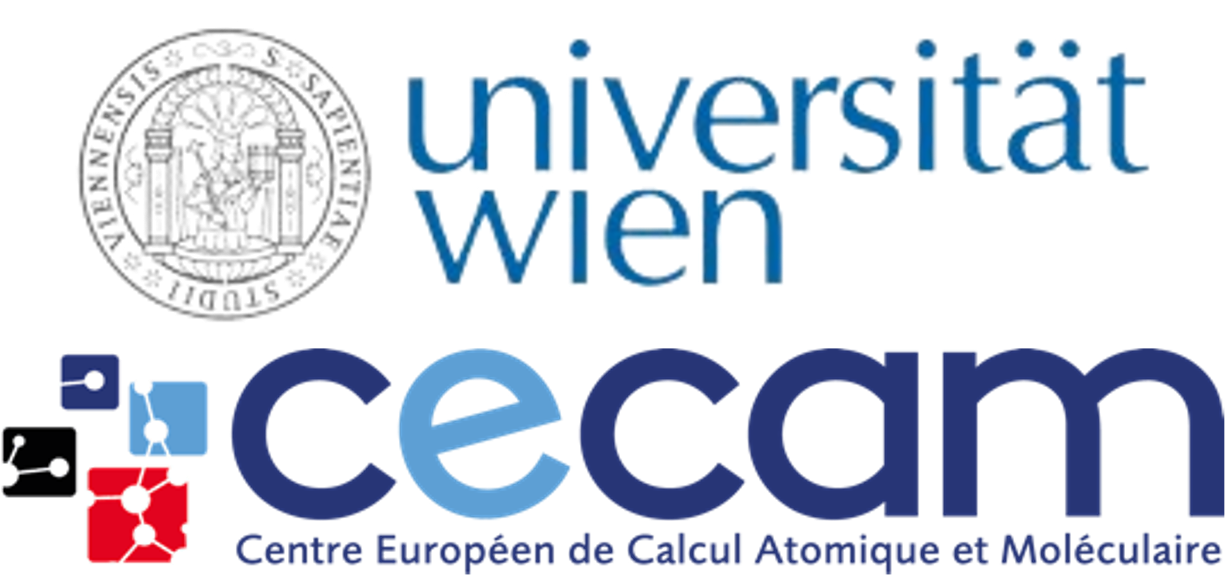The increase in computational power over the past decades has come hand in hand with numerous advances to decipher chemical phenomena at the atomistic level. A large part of this progress is due to the development of more efficient simulation techniques. One such technique is machine learning (ML), which is by now applied across different sub-fields of molecular simulation. Machine learned force fields [1], the classification of matter [2], the prediction of reactions [3] and generative sampling algorithms [4] are only a few of these. While these advances have greatly extended the accessible length and time scales of atomistic simulations, there still are many phenomena that are challenging if not impossible to study with current technologies. Chemical processes are often characterized by rare events caused by high energetic or entropic barriers hindering the rapid motion of the system between long-lived stable states. As the barrier crossing time scales may be very long, such systems are difficult to simulate even if inexpensive machine learned force fields are used. To address this problem, numerous approaches have been devised, including umbrella sampling [5], metadynamics [6], transition path sampling [7, 8, 9], and forward flux sampling [10], which increase the likelihood of observing rare but important events either by introducing an appropriate bias or by focusing on reactive trajectories.
The field of rare event simulation is rather mature for processes that occur in the electronic ground state. By contrast, much remains to be done when electronic excited states are involved. Light-induced reactions play a fundamental role in many phenomena ranging from vision, sensing, information technology, photodamage [11,12], photosynthesis [13] and many others. In order to describe reactions initiated by light, one needs methods able to calculate electronic excited states as well as simulation techniques that describe the evolution of the nuclei under the influence of the electronic changes spurred by light. A number of methods and techniques exist to describe nuclear non-adiabatic dynamics, including mixed quantum-classical surface hopping approaches [14], MASH [15], κCSDM [16], AIMS [17], MCTDH [18] . All these methods rely on quantum chemical calculations, one way or another, and therefore can be used to simulate only short time scales. A interesting challenge is to apply rare event sampling methods to excited state processes.
The development of new computational methods benefits from rigorous mathematical insights. These are not only vital for understanding the validity and limitation of the methods but also to push improvements. In fact, all the three themes of the workshop are currently attracting mathematical attention on their own. See for instance, publications about the rigorous analysis of surface-hopping algorithms [19, 20] and the investigation of the mathematical foundations of machine learning for materials [21, 22].
Recently, some efforts have been made to apply machine learning to rare events sampling [23,24] and excited state dynamics [25, 26, 27], and rare events sampling has been applied to reactions occurring on excited states [28]. The goal of this workshop is to bring together experts in machine learning, excited state dynamics, rare event sampling as well as applied mathematics to explore synergies between theses fields that have not been fully exploited yet.
[1] P. Friederich, F. Häse, J. Proppe, A. Aspuru-Guzik, Nat. Mater., 20, 750-761 (2021)
[2] N. Pillai, A. Dasgupta, S. Sudsakorn, J. Fretland, P. Mavroudis, Drug Discovery Today, 27, 2209-2215 (2022)
[3] M. Segler, M. Waller, Chem. Eur. J., 23, 5966-5971 (2017)
[4] F. Noé, S. Olsson, J. Köhler, H. Wu, Science, 365, (2019)
[5] G. Torrie, J. Valleau, Journal of Computational Physics, 23, 187-199 (1977)
[6] A. Laio, M. Parrinello, Proc. Natl. Acad. Sci. U.S.A., 99, 12562-12566 (2002)
[7] P. Bolhuis, C. Dellago, Eur. Phys. J. Spec. Top., 224, 2409-2427 (2015)
[8] P. Bolhuis, D. Chandler, C. Dellago, P. Geissler, Annu. Rev. Phys. Chem., 53, 291-318 (2002)
[9] T. van Erp, D. Moroni, P. Bolhuis, The Journal of Chemical Physics, 118, 7762-7774 (2003)
[10] R. Allen, C. Valeriani, P. Rein ten Wolde, J. Phys.: Condens. Matter, 21, 463102 (2009)
[11] E. Gonzaga, American Journal of Clinical Dermatology, 10, 19-24 (2009)
[12] C. George, M. Ammann, B. D’Anna, D. Donaldson, S. Nizkorodov, Chem. Rev., 115, 4218-4258 (2015)
[13] M. Johnson, Essays in Biochemistry, 60, 255-273 (2016)
[14] S. Mai, P. Marquetand, L. González, WIREs. Comput. Mol. Sci., 8, (2018)
[15] J. Mannouch, J. Richardson, J. Chem. Phys., 158, 104111 (2023)
[16] Y. Shu, L. Zhang, X. Chen, S. Sun, Y. Huang, D. Truhlar, J. Chem. Theory Comput., 18, 1320-1328 (2022)
[17] H. Meyer, U. Manthe, L. Cederbaum, Chemical Physics Letters, 165, 73-78 (1990)
[18] T. Martinez, M. Ben-Nun, R. Levine, J. Phys. Chem., 100, 7884-7895 (1996)
[19] Z. Cai, J. Lu, SIAM J. Sci. Comput., 40, B1277-B1301 (2018)
[20] A. Faraj, S. Jin, Commun. Comput. Phys., 21, 313-357 (2017)
[21] C. Schütte, S. Klus, C. Hartmann, Acta Numerica, 32, 517-673 (2023)
[22] P. Neumann, N. Wittmer, Open Boundary Modeling in Molecular Dynamics with Machine Learning, (2020)
[23] L. Holdijk, Y. Du, F. Hooft, P. Jaini, B. Ensing, M. Welling, Path Integral Stochastic Optimal Control for Sampling Transition Paths (2022). http://arxiv.org/abs/2207.02149
[24] M. Arts, V. G. Satorras, C.-W. Huang, D. Zuegner, M. Federici, C. Clementi, F. Noé, R. Pinsler, & R. van den Berg , Two for One: Diffusion Models and Force Fields for Coarse-Grained Molecular Dynamics (2023). http://arxiv.org/abs/2302.00600
[25] J. Westermayr, M. Gastegger, P. Marquetand, J. Phys. Chem. Lett., 11, 3828-3834 (2020)
[26] J. Li, S. Lopez, Acc. Chem. Res., 55, 1972-1984 (2022)
[27] Y. Zhu, J. Peng, X. Kang, C. Xu, Z. Lan, Phys. Chem. Chem. Phys., 24, 24362-24382 (2022)
[28] M. Reiner, B. Bachmair, M. Tiefenbacher, S. Mai, L. González, P. Marquetand, C. Dellago, J. Chem. Theory Comput., 19, 1657-1671 (2023)

